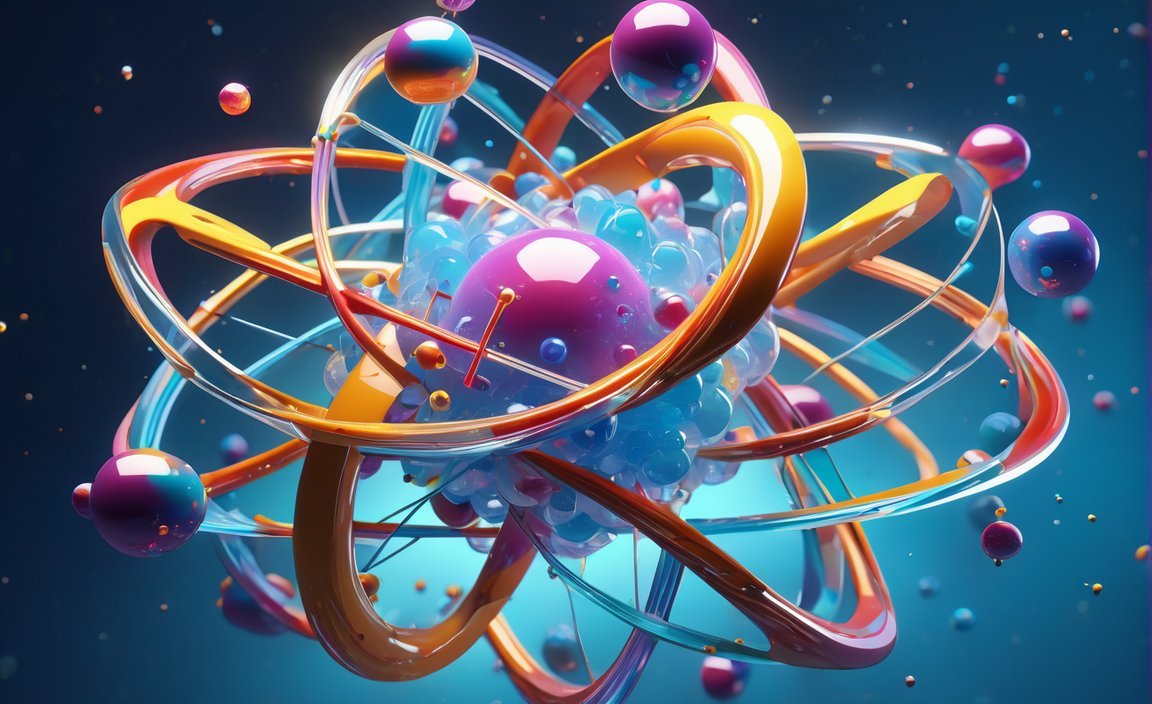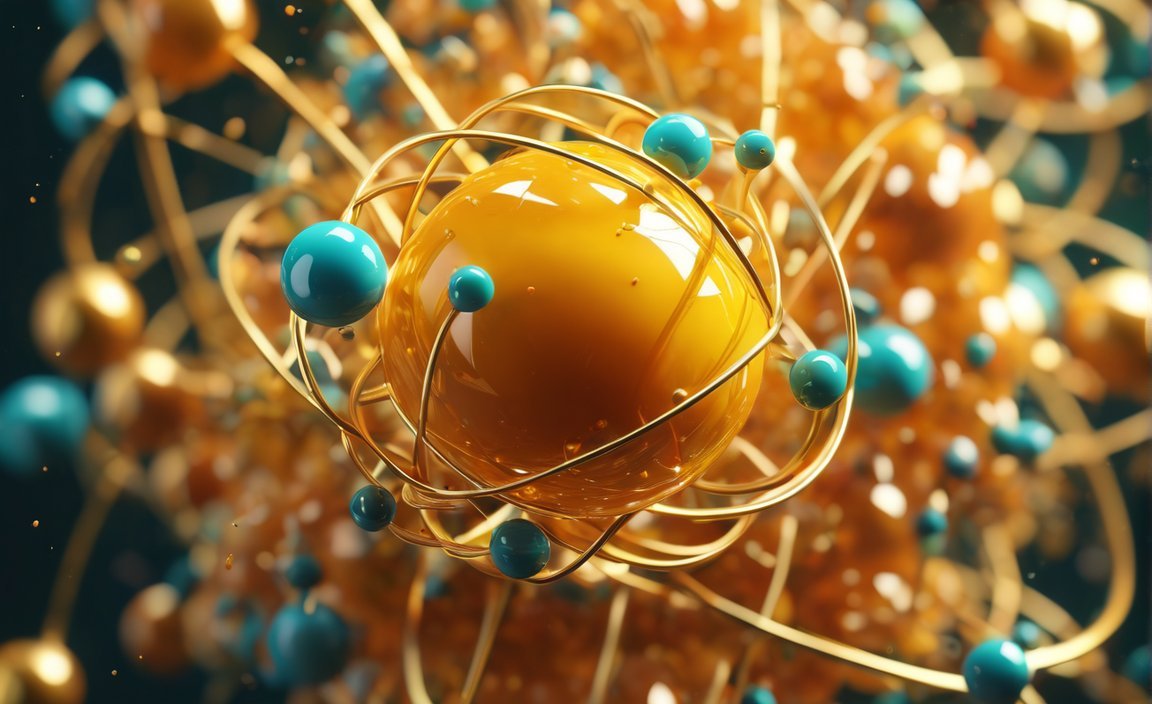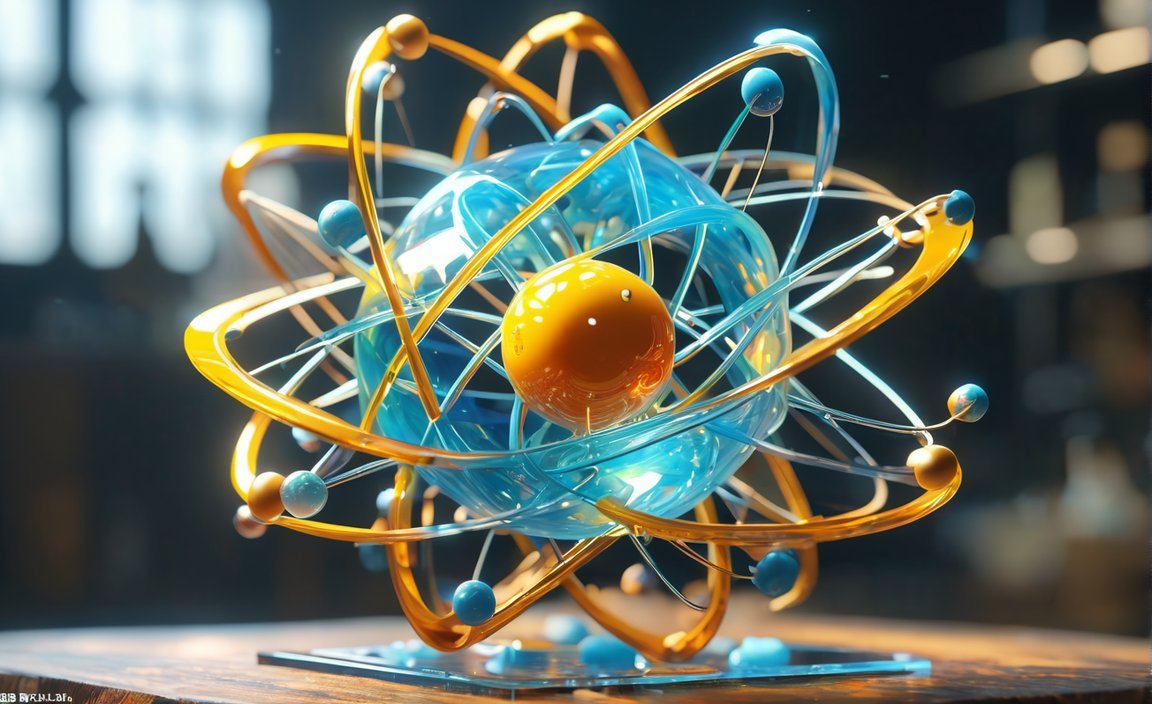Unveiling the Atomic Structure of Sodium: Exploring the Key to Chemical Reactivity takes us on a captivating journey into the intricate world of sodium atoms. As a seasoned materials scientist, I am fascinated by the fundamental role atomic structures play in determining the chemical properties of elements. With my extensive experience in studying and analyzing the atom model, particularly in relation to sodium, I am uniquely equipped to delve into the captivating details of sodium’s atomic arrangement. Join me as we uncover the secrets behind sodium’s reactivity and its significance in fields such as chemistry, physics, and materials science.

Key Takeaways:
- The atomic structure of sodium consists of 11 protons, 11 electrons, and 12 neutrons located in the nucleus.
- Sodium’s electrons revolve around the nucleus in three electron shells: K-shell, L-shell, and M-shell.
- The valence shell of sodium, which is the outermost shell, contains only one electron.
- Sodium’s electron configuration is 1s2 2s2 2p6 3s1, with two electrons in the first shell, eight electrons in the second shell, and one electron in the third shell.
- When sodium atoms come together, the electron in the 3s orbital of one sodium atom shares space with the corresponding electron on a neighboring atom, forming a molecular orbital.
Atom model of sodium
The atom model of sodium provides a fascinating glimpse into the atomic structure of this essential element. By understanding the arrangement of sodium atoms, we can unlock the key to its chemical reactivity and explore its significance in various scientific fields.
The Structure of Sodium Atom
According to the Bohr model, a sodium atom consists of 11 protons, 11 electrons, and 12 neutrons located in the nucleus. The electrons orbit the nucleus in specific paths called electron shells, with three main shells known as the K-shell, L-shell, and M-shell. The outermost shell, called the valence shell, houses only one electron.
Unveiling Electron Configuration
To comprehend the electron configuration of sodium, we need to examine the arrangement of electrons in the different shells. Sodium’s electron configuration is 1s2 2s2 2p6 3s1. This configuration signifies two electrons in the first shell, eight in the second shell, and one in the third shell. By sharing space with corresponding electrons from neighboring atoms in the 3s orbital, sodium atoms are capable of forming molecular orbitals.
Understanding the atom model of sodium is crucial as it lays the foundation for comprehending its chemical behavior and reactivity. Sodium is known to possess a single valence electron, which is easily lost during chemical reactions, leading to its high reactivity. This reactivity makes sodium a vital component in various chemical processes, such as the production of certain molecules and the functioning of biological systems.
As we delve deeper into the intricacies of sodium’s atomic arrangement, we gain valuable insights that can be applied in the fields of chemistry, physics, and materials science. The atom model of sodium serves as a fundamental building block for understanding the behavior and properties of this essential element.
If we want to visualize the atom model of sodium, we can refer to the Bohr diagram. This diagram represents sodium’s electron shells and their respective electron count, providing a clear picture of its atomic structure.
To conclude, the atom model of sodium holds the key to unraveling its chemical reactivity and understanding its significance in various scientific disciplines. By exploring its structure, electron configuration, and properties, we gain a deeper understanding of the fundamental nature of sodium atoms and their role in our physical world.
Sources:
– Techiescientist: Sodium Bohr Model — Diagram, Steps To Draw
– Topblogtenz: Sodium Bohr Model – How to draw Bohr diagram for Sodium
Here are some interesting links for you to explore:
- Facts about a violin – Discover intriguing facts about the violin and its history.
- Is carbon malleable – Learn about the properties and malleability of carbon.
- Forest food chain ecosystem – Dive into the intricacies of the forest food chain ecosystem.
- Food chain of a great white shark – Explore the fascinating food chain of the mighty great white shark.
- Marine mammals word search – Challenge yourself with a word search puzzle featuring marine mammals.
- Visible stars word search – Engage in a word search puzzle focusing on visible stars in the night sky.
- How long do dart frogs live – Uncover the lifespan of dart frogs and their intriguing behaviors.
- Boreal forest abiotic factors – Gain insights into the abiotic factors that shape the boreal forest.
- The food chain of a lion – Follow the captivating food chain of a majestic lion and its prey.
- How do gemstones work scientifically – Delve into the scientific mechanisms behind the enchanting world of gemstones.
- Label the parts of the wave – Test your knowledge by labeling the different parts of a wave.
- Birds of the savanna – Explore the diverse and colorful avian species inhabiting the savanna ecosystem.
- Difference between male and female cardinals – Learn about the distinguishing features between male and female cardinals.
- What does a penguin’s mouth look like – Curious about a penguin’s mouth? Discover its unique appearance and function.
Feel free to click on any of the links above and delve into fascinating topics that pique your interest!
3. Electronic Configuration of Sodium
The electron configuration of sodium, a fundamental aspect of its atomic structure, plays a vital role in understanding its chemical behavior and reactivity. Through the arrangement of electrons in specific orbits and orbitals, sodium’s electronic configuration defines its unique characteristics and properties.
Atomic Energy Shells and Sub-Orbitals:
Scientist Niels Bohr revolutionized the understanding of atomic structure in 1913 by proposing the first model of electron orbits. According to this model, sodium’s electron configuration is determined through the arrangement of electrons in various orbital levels, also known as atomic energy shells. These atomic energy shells further consist of sub-energy levels called orbitals, which define the most probable region for electron rotation around the nucleus.
Electron Configuration of Sodium Atom:
The electron configuration of sodium, with a total of eleven electrons, follows a specific pattern. Sodium’s atoms have three main electron shells, named the K-shell, L-shell, and M-shell. The valence shell, which is the outermost shell, contains a single electron. The electron configuration of sodium is as follows: 1s2 2s2 2p6 3s1. In this configuration, two electrons occupy the first shell, eight electrons occupy the second shell, and one electron resides in the third and outermost shell.
Chemical Behavior and Reactivity:
Sodium’s sole valence electron makes it highly reactive and easily susceptible to loss during chemical reactions. This electron configuration is crucial for explaining the chemical behavior of sodium ions. When sodium participates in bond formation, it donates the electron in its valence shell, aiming to achieve a more stable electron configuration. Understanding sodium’s electronic configuration helps elucidate its remarkable reactivity, which plays a significant role in various chemical processes and the functioning of biological systems.
Relevance and Significance:
Comprehending the atom model of sodium, including its electronic configuration, provides valuable insights and has wide-ranging applications in the fields of chemistry, physics, and materials science. By understanding the arrangement of electrons in sodium atoms, scientists and researchers can unravel the underlying principles of chemical reactivity and design materials with tailored properties.
Key Takeaways:
– The electron configuration of sodium is 1s2 2s2 2p6 3s1.
– Sodium’s valence shell contains one electron, which is easily lost during chemical reactions.
– Sodium’s electronic configuration contributes to its high reactivity.
– Knowledge of sodium’s electron arrangement is essential for studying its chemical behavior and properties.
– Understanding sodium’s atomic structure has significant implications in chemistry, physics, and materials science.
Sources:
– Valence Electrons. (n.d.). Sodium Electron Configuration. Retrieved from [URL]
– TerpConnect – Chemistry. (n.d.). How to Write the Electron Configuration for Sodium (Na). Retrieved from [URL]
4. Chemical Properties of Sodium
Sodium, a fundamental element with atomic number 11, possesses unique chemical properties that have captivated materials scientists and chemists alike. Its atomic structure holds the key to understanding its reactivity and its indispensable role in various scientific fields. In this article, we will delve into the atomic model of sodium, exploring its structure, properties, and the significance it holds in the realm of chemistry, physics, and materials science.
Sodium’s Reactivity: Exploring the Inner Workings
Sodium’s reactivity is a defining characteristic that sets it apart from other elements. With its single valence electron in the third shell, sodium is eager to lose this electron and achieve a stable electron configuration. This tendency makes sodium highly reactive, especially when it encounters substances with which it can readily form stable compounds.
Reactivity with Water and Air
One notable example of sodium’s reactivity is its reaction with water. When sodium comes into contact with water, a vigorous reaction takes place, resulting in the formation of sodium hydroxide (NaOH). This reaction showcases sodium’s tendency to give away its single valence electron and form ionic compounds.
Sodium also reacts with air, though the extent of its reactivity depends on the relative humidity and the presence of impurities. In dry air, sodium oxidizes, forming sodium monoxide (Na2O). This reaction highlights the significance of sodium’s electron configuration in determining its chemical behavior.
Reactivity with Other Elements
Sodium’s reactivity extends beyond its interactions with water and air. It reacts vigorously with nonmetals, particularly halogen gases, such as chlorine and fluorine. These reactions result in the formation of various compounds, showcasing sodium’s versatility in bonding with different elements.
On the other hand, sodium shows relatively little reactivity with carbon. This property makes it a useful element in certain chemical processes and industrial applications.
Physical Properties and Practical Applications
Aside from its reactivity, sodium possesses distinct physical properties. It is a soft, silvery metal that serves as an excellent conductor of electricity and heat. Furthermore, sodium boasts a low atomic mass and a large atomic radius, making it one of the least dense of all elemental metals.
These physical properties contribute to sodium’s wide range of applications in various industries. Sodium plays a crucial role in chemical manufacturing, metallurgy, and pharmaceuticals, among others. Its reactivity, conductive properties, and unique characteristics make it an essential component in countless products and processes.
Key Takeaways:
- Sodium’s reactivity stems from its single valence electron, which it readily donates to achieve a stable electron configuration.
- Sodium reacts vigorously with water, forming sodium hydroxide (NaOH) and with air, producing sodium monoxide (Na2O) in dry conditions.
- Its reactivity with nonmetals, such as halogens, allows for the formation of diverse compounds.
- Sodium’s physical properties, including its conductivity and low density, make it invaluable in industries like chemical manufacturing and metallurgy.
Sources:
1. Chemical Properties of Sodium – Britannica
2. Sodium – Element Information, Properties and Uses – RSC
5. Applications and Significance of Sodium Atom
Sodium, with its atomic structure and unique properties, plays a significant role in various applications across chemistry, physics, and materials science. Understanding the atom model of sodium provides valuable insights into its chemical behavior and reactivity, making it a crucial area of study for scientists and researchers. In this section, we will explore the applications and significance of the sodium atom, shedding light on its importance in different fields.
Sodium in Chemistry
The atom model of sodium, consisting of 11 protons, 11 electrons, and 12 neutrons, is a fundamental building block in understanding chemical reactions. Sodium’s electron configuration, 1s2 2s2 2p6 3s1, is particularly noteworthy. Its single valence electron makes sodium highly reactive and prone to losing it during chemical reactions. This reactivity is essential for various chemical processes, such as the formation of sodium hydroxide when sodium reacts with water and the formation of sodium monoxide when it reacts with air. Sodium’s reactivity extends to its reactions with nonmetals, such as halogens, resulting in the formation of different sodium compounds. However, sodium shows relatively little reactivity with carbon.
Sodium in Physics
The atom model of sodium also finds significance in the field of physics. Sodium’s electron shells, namely the K-shell, L-shell, and M-shell, can be visualized using the Bohr diagram. This visualization helps in understanding the distribution of electrons within the atom and their energy levels. Sodium’s electron configuration, with its single valence electron, influences its physical properties and reactivity. Sodium’s atomic structure affects its ability to conduct electricity and its response to external electric and magnetic fields. These properties make sodium a valuable component in physics experiments and applications.
Sodium in Materials Science
In materials science, comprehending the atomic structure of sodium is crucial for designing and developing new materials with specific properties. Sodium’s unique chemical and physical properties, stemming from its atomic structure, make it an integral part of various industries. Its soft, silvery appearance, low density, and good conductivity make sodium a sought-after metal for applications in sectors such as chemical manufacturing, metallurgy, and pharmaceuticals. Additionally, the reactivity of sodium and its ability to form compounds with other elements play a vital role in the synthesis of advanced materials and the creation of alloys.
Key Takeaways:
- Understanding the atom model of sodium provides insights into its chemical behavior and properties.
- Sodium’s electron configuration, 1s2 2s2 2p6 3s1, makes it highly reactive and prone to losing its valence electron during chemical reactions.
- Sodium’s reactivity is important in various chemical processes and the functioning of biological systems.
- Sodium’s electron shells can be visualized using the Bohr diagram, aiding in the understanding of its electron distribution and energy levels.
- Sodium’s atomic structure affects its physical properties, conductivity, and response to external fields.
- Sodium’s reactivity and physical properties make it valuable in industries such as chemical manufacturing, metallurgy, and pharmaceuticals.
For more information, please refer to:
1. Sodium – Properties – Price – Applications – Production
2. Sodium – Element information, properties and uses | Periodic Table

FAQ
Q1: What is the atomic model of sodium?
A1: According to the Bohr model, the sodium atom consists of 11 protons, 11 electrons, and 12 neutrons located in the nucleus. The electrons revolve around the nucleus in three electron shells, with the outermost shell, known as the valence shell, containing only one electron.
Q2: What is the electron configuration of sodium?
A2: The electron configuration of sodium is 1s2 2s2 2p6 3s1, indicating that it has two electrons in the first shell, eight electrons in the second shell, and one electron in the third shell.
Q3: What is the significance of sodium’s atomic arrangement?
A3: Sodium’s atomic arrangement is significant in various fields such as chemistry, physics, and materials science. Understanding the arrangement helps explain sodium’s chemical properties, reactivity, and behavior when it forms bonds with other elements.
Q4: How does sodium ionize to form Na+?
A4: Sodium ionizes by donating the electron in its last shell during bond formation, resulting in the formation of a sodium ion with a positive charge (Na+). The electron configuration of a sodium ion is 1s2 2s2 2p6.
Q5: What are some applications of sodium?
A5: Sodium has various applications in industries such as chemical manufacturing, metallurgy, and pharmaceuticals. It is used in the production of chemicals, alloys, and medicines. Additionally, sodium compounds like sodium carbonate have applications in glass manufacturing and water treatment.












